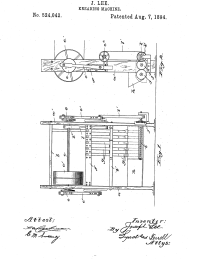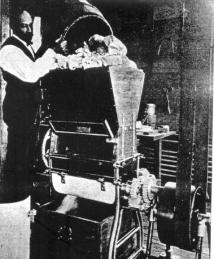Joseph Lee
Joseph Lee was a pioneer in the automation of bread and breadcrumb making in the late 1800s. He invented machines for use in the hospitality industry that automated the mixing and kneading of bread dough, and that created crumbs from day-old loaves.
Born in South Carolina in 1849, Lee was enslaved for the first 10 years of his life. He became a blacksmith during the Civil War, and after gaining his freedom, he worked as a servant in Beaufort, then served for 11 years as a steward in the U.S. Coast Survey, now part of NOAA, the National Oceanic and Atmospheric Administration. Here, he was tasked with cooking and baking, and he gave particular attention to bread making.
By the early 1880s, the self-educated Lee had become a successful entrepreneur. He owned and operated a number of restaurants, hotels and catering establishments in the Boston area. In this work, he found many problems to solve and processes to improve, driving him to also become an impactful inventor.
In 1894, Lee filed for his first patent, on a kneading machine that would streamline the process of producing uniform bread. A skilled chef and baker, Lee had observed that the best bread was produced by evenly kneaded dough, so his efficient machine was designed to “thoroughly mix and knead the dough and bring it to the desired condition without resorting to the tedious process of mixing and kneading the same by hand.” The machine used “two oppositely revolving conveyers” so that the dough would be continuously moved to the center, where it was kneaded by pestles. A similar design can still be found in today’s automatic bread makers, which often use spinning paddles to evenly knead dough.
The same year Lee patented his kneading machine, his name appeared on a revolutionary document known as “Baker’s List.” Written by lawyer and patent examiner Henry E. Baker and submitted into the Congressional Record by U.S. Representative and National Inventors Hall of Fame® Inductee George Washington Murray, Baker’s List documented the 92 U.S. patents that had thus far been granted to Black inventors, challenging the nation’s limited view of who could invent and innovate.
Lee’s drive to invent did not stop with his kneading machine. His next idea developed as he became frustrated by the large amount of unsold bread his kitchens discarded because it was a day or more old and slightly stale. Lee believed that breadcrumbs were better than cracker crumbs for coatings, so he created a device to mechanize the tearing, crumbling and grinding of bread into crumbs. He patented his “bread crumbing machine” in 1895.
By 1900, Lee’s crumber was used by many of America’s leading hotels and was a fixture in hundreds of the country’s leading catering establishments. It also was used by individuals looking for a clever way to use their leftover bread at home. Lee sold the rights to his crumber to Boston’s Royal Worcester Bread Co., making it possible for kitchens across the world to take advantage of this technology.
In 1902, Lee patented an improvement to his bread machine, offering superior kneading action that closely approximated the work of human hands. By decreasing waste and increasing productivity, each of Lee’s innovative bread machines made a significant impact, allowing businesses to operate at a larger capacity and with higher efficiency.
Lee eventually assigned the rights to his bread-kneading machine to The National Bread Co., and he continued to own stock and receive royalties. He also sold his bread-crumbing machine to The Goodell Co., a manufacturing firm located in New Hampshire, and he passed his business on to his children.


